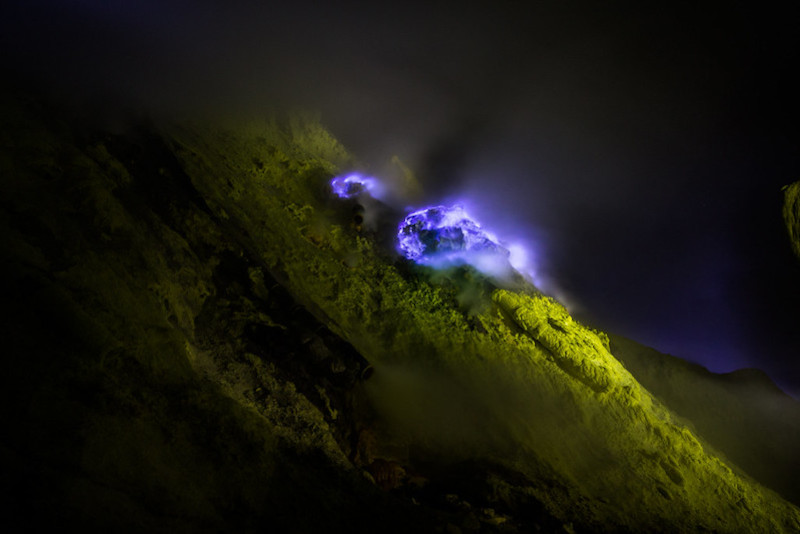Kawah Ijen Facts
- Kawah Ijen ranks as a rather remarkable volcano located in Java, in Asia. This marvel of geology represents a type of volcano known as a stratovolcano and also forms an active volcano.
- Eruptions occur fairly commonly, though typically relatively small. It actually remains one of the several active volcanoes in the region.
- These themselves form part of a larger complex.
- This complex sits entirely within the remnants of a single enormous caldera. This ancient caldera measures roughly 12.4 mi (20 km) across.
- Kawah Ijen itself appears unique and contains numerous distinctive features.
Related Articles
Kawah Ijen Geological Characteristics
Kawah Ijen contains numerous features of interest, along with a stark beauty. The crater itself measures about 3,117 ft (950 m) across. The volcano also contains the largest known acidic volcanic crater lake.
This lake is renowned for its remarkable turquoise blue color. The volcano produces enormous deposits of sulfur. These are continuously mined for their industrial uses.
Small eruptions occur routinely, and with little or no warning. However, these typically stay contained within the lake itself.
Numerous fumaroles are also present within Kawah Ijen.
Kawah Ijen Mysterious Blue Flames
Kawah Ijen also remains renowned for its remarkable blue flames. These occur both day and night, yet only appear blue at night.
Despite many erroneous suppositions, this does not represent a form of lava. The volcano also produces enormous quantities of superheated sulfur gas.
This gas emerges near the volcano, under great pressure, and at extreme temperatures. When this gas contacts air it ignites, generating the remarkable blue flame.
Due to the extreme pressures involved, some of the sulfur gas emerges as liquid sulfur. This ignites and flows down the side of the volcano, and creates the remarkable illusion of blue lava.
Features Sharing Its Region
Check out our other articles on 7 Truly Astounding Geological Wonders, Walrus, Mount Olympus, Powder Blue Damselfly, European Honey Buzzard, Oceanic whitetip shark, Green Iguana

